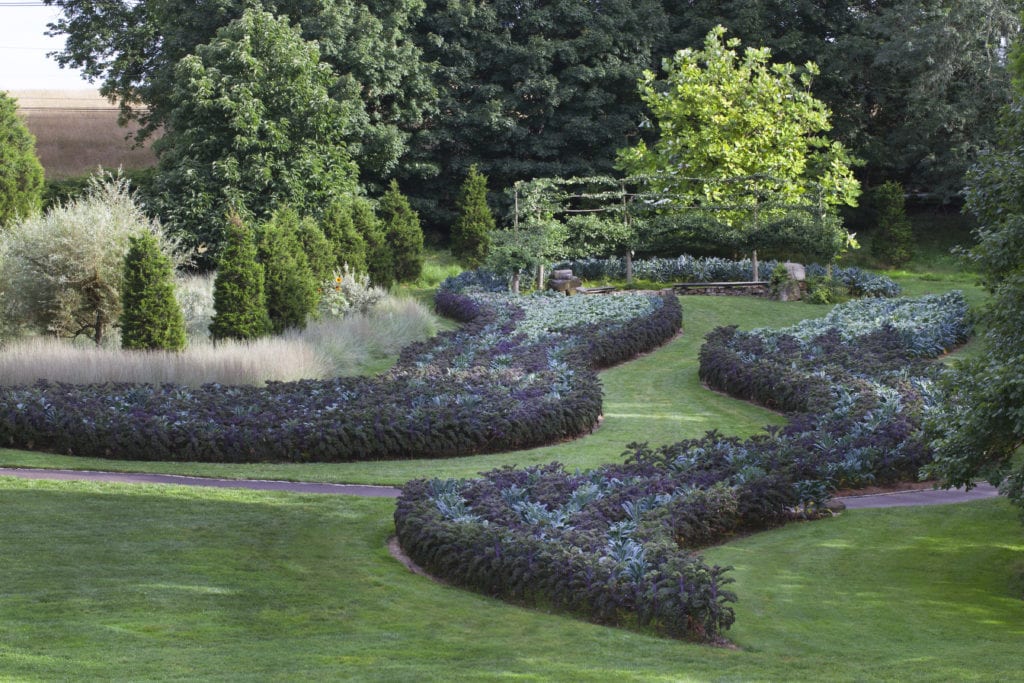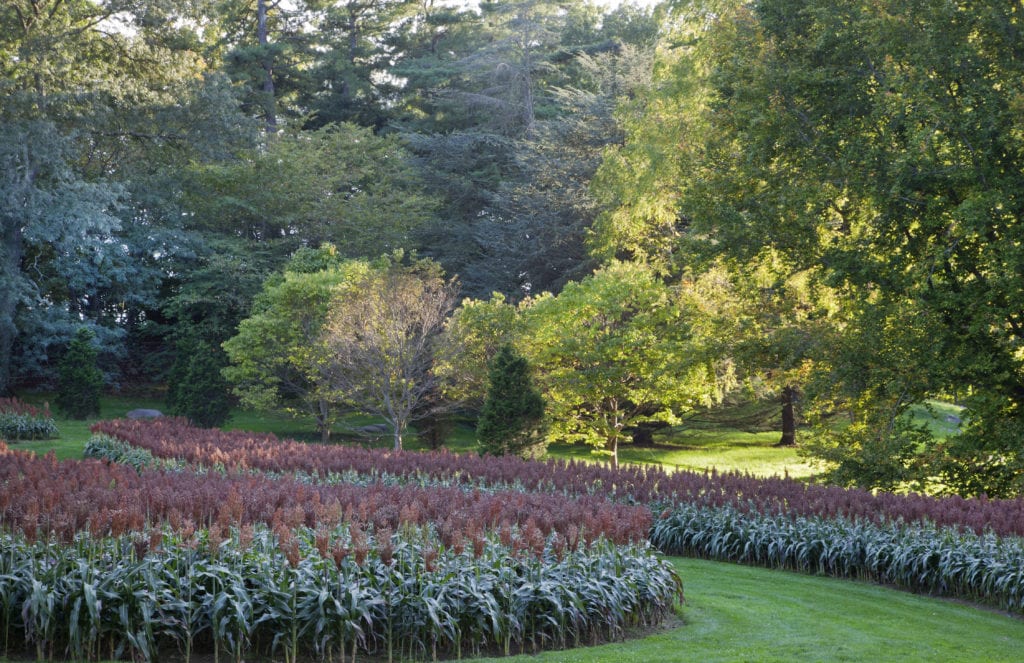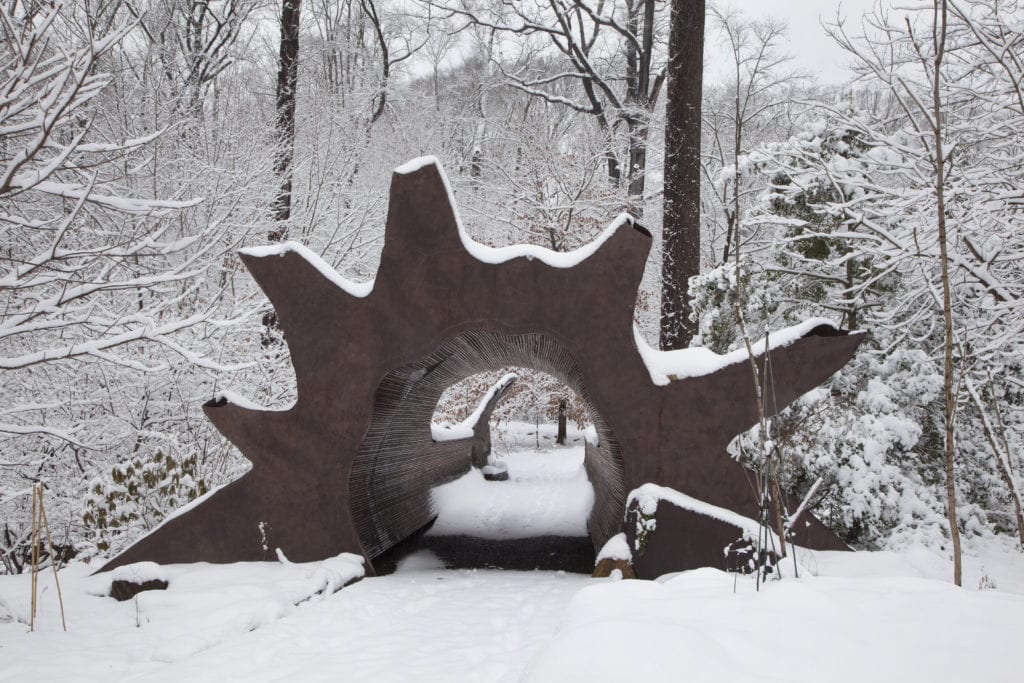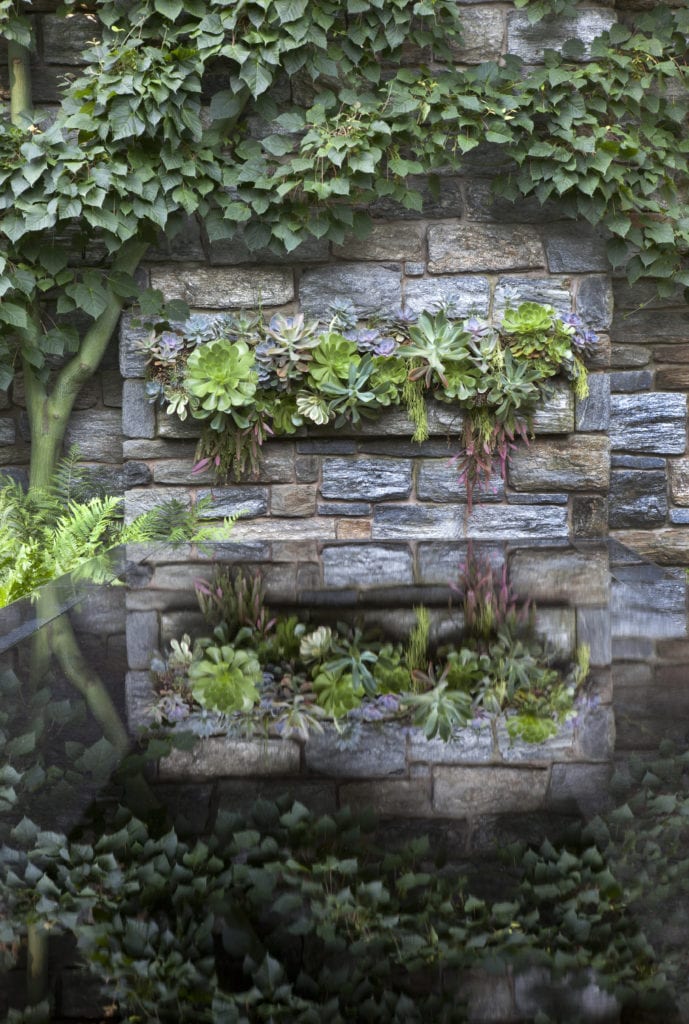2017 Conference Session Review
by David Falk
Chanticleer Garden in Wayne, PA grew out of a large family estate with intricate gardens created for the family’s pleasure. Now open to the public, Chanticleer stays true to its origins as a pleasure garden, but its purpose also seems to be to expand that idea to include the pleasure of gardening.
Chanticleer is a garden that is treated as a work of art, a place to explore new ideas in gardening and to create unique natural spaces. The art begins, of course, with the plants, but reaches past the usual art practiced in plant selection. Gardeners at Chanticleer have transformed garden traditions like lawns, kitchen gardens, and ponds in subtle and not so subtle ways, drawing out fresh combinations from old structures. The art extends beyond the plants to the hardscaping in the garden, the paths, bridges, fencing, and metal work. Behind the scenes, they push the boundaries of the hidden sides of horticulture: compost and water collection.
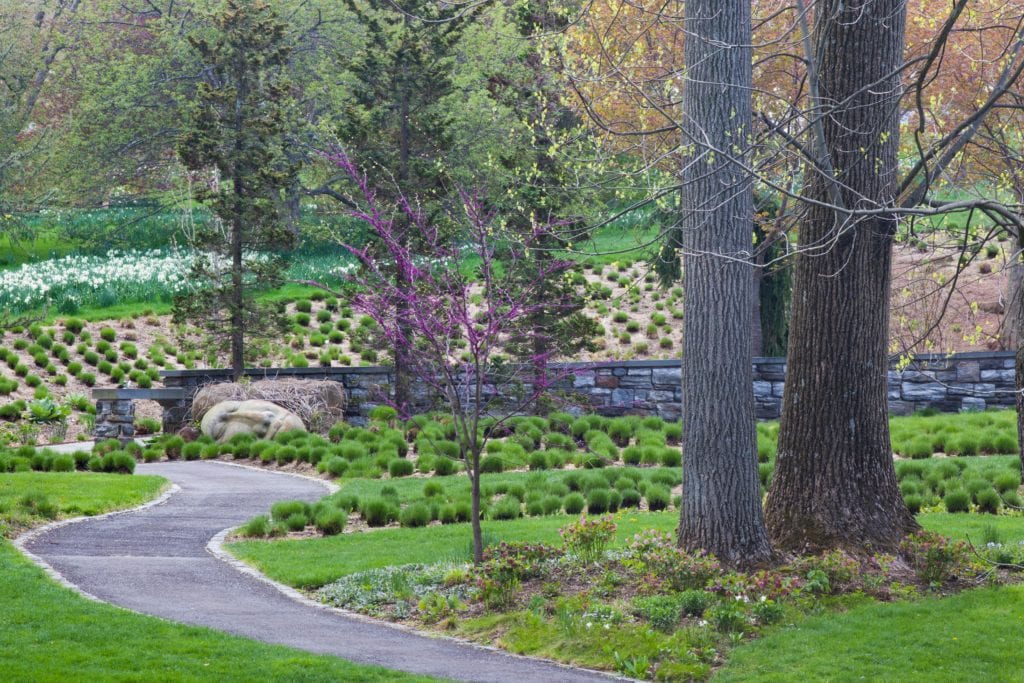
A path leads past the Sporobolus heterolepis meadow, one of many lawn alternative areas of the gardens at Chanticleer outside Philadelphia, PA. Artist Marsha Donahue created the stone carved face. Photo: Lisa Roper
Changing the Perception of Lawn
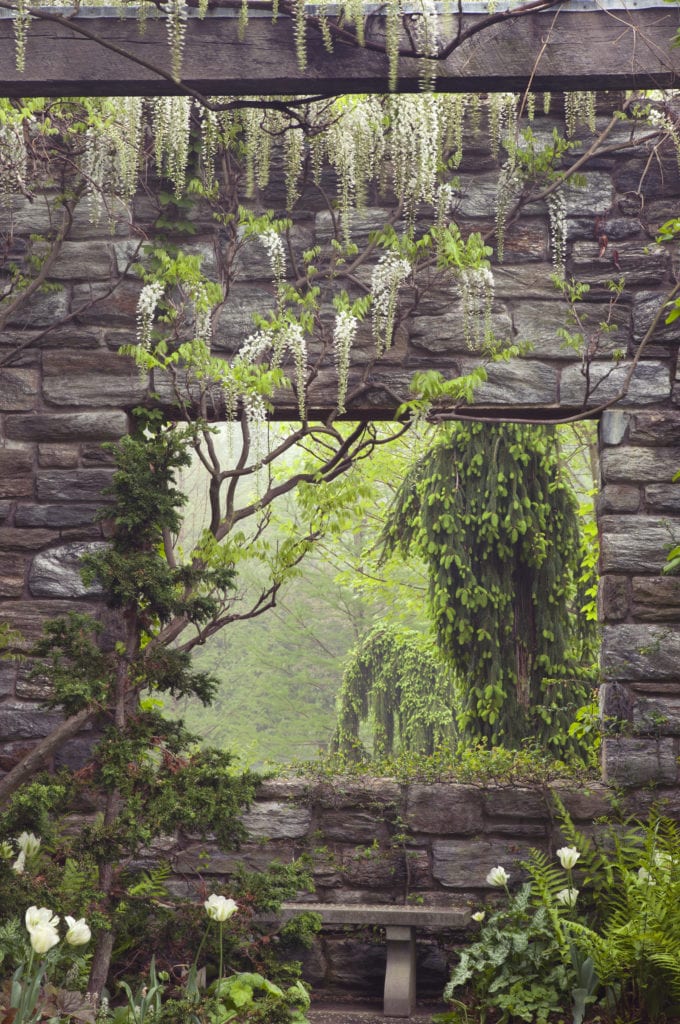
Wisteria floribunda ‘Shiro Noda’ in bloom climbs a window in the Ruin Garden, framing a view to Picea abies ‘Pendula’, the weeping spruce. Photo: Lisa Roper
Lawns are a part of public gardening that is impossible to do without. They allow visitors to move through the garden and have space to relax and view the garden. But in this way, lawns are traditionally removed from the garden, separate from the rest of the landscape both visually and in practice since they require unique maintenance. At Chanticleer they have asked their lawns to be more than mere recreational spaces and, at least in part, to rejoin the landscape and become part of the show.
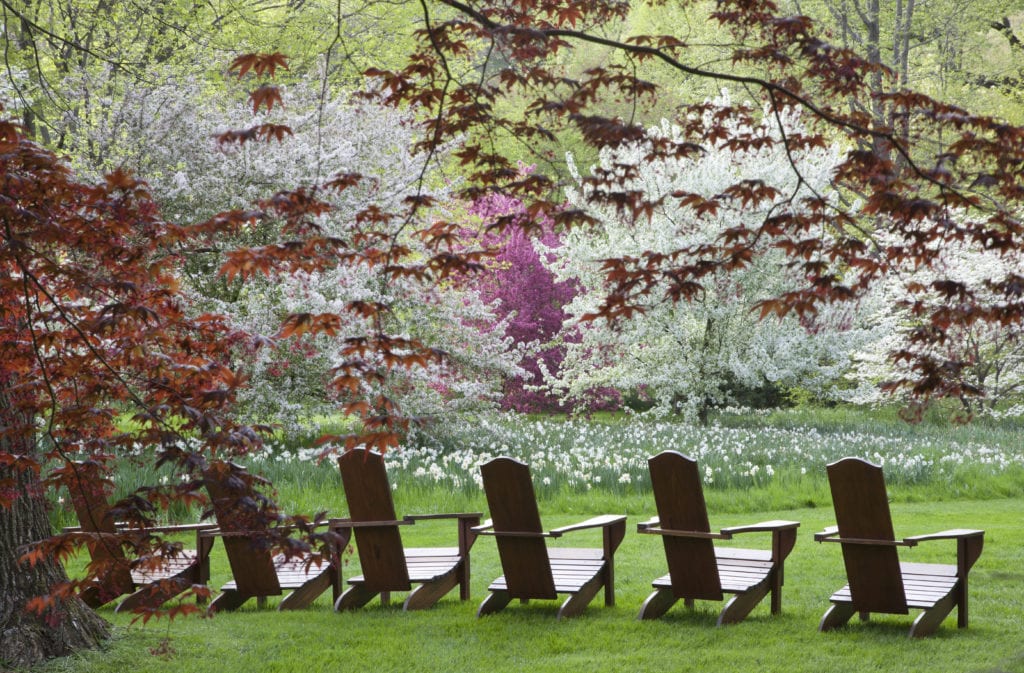
Drifts of daffodils and clouds of crab apple blossoms perfume the air on The Orchard Lawn. Photo by Lisa Roper
In one area the lawn has been planted with bulbs, making it into an early season flower show. But doing this also forced a new maintenance regimen as the leaves of the bulbs needed to be left uncut for part of the early season after the flower display ended. The lawn grass is allowed to grow, not mowed until June. As it flowers and fruits the grass becomes a glowing sea of seeds and a favorite display of many visitors. After mowing it returns to duty as a recreational lawn for the busy times in summer and fall. Similarly, but in a wilder way, another stretch of lawn has been converted into a grassy meadow full of wild flowers. This lawn alternative is now more landscape than lawn and mowed only once a year.
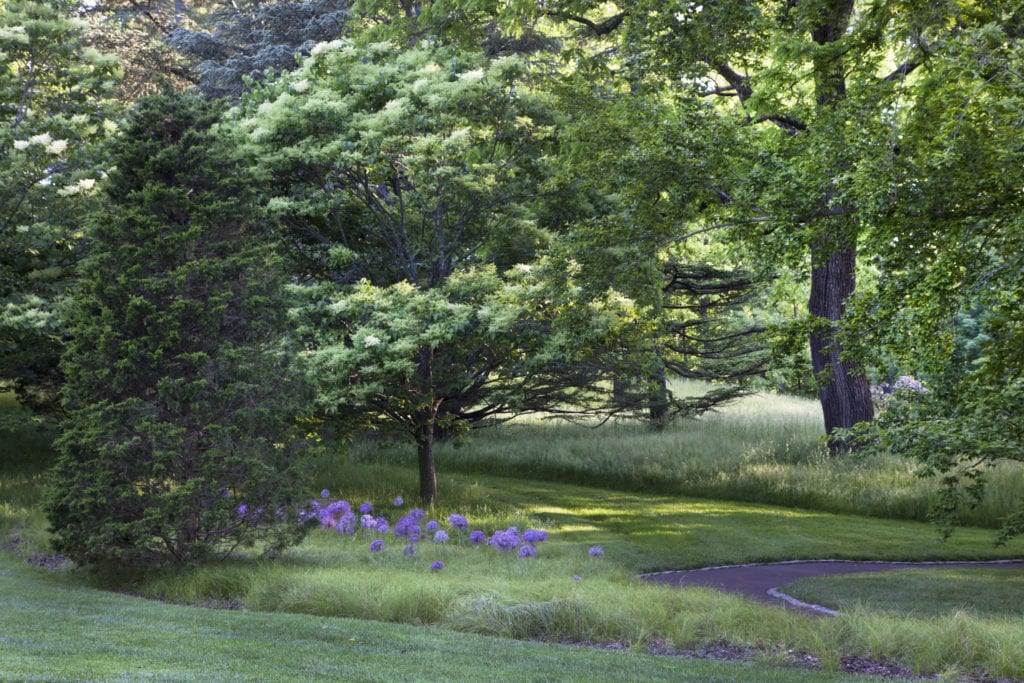
Allium christophii blooms in the Carex bed (foreground); grass has been left to mature and flower in the bulb lawns in the background. Photo: Lisa Roper
Edging in Edibles
Playing with the aesthetic of agriculture, they have created what they call the Serpentine, a winding field filled with a regular pattern of crops like winter rye or kale. The effect is either an elegant play on formality or the gentle feeling of a meandering river. The Serpentine is both agriculture and gardening; it is a design that blurs these lines and explores them, using non-traditional no-till techniques in a playful, yet formal display. Similar to the Serpentine are an exquisite kitchen garden and cut flower garden, each equally functional and ornamental. The flowers are used in arrangements and the organic produce is given to a nearby shelter.
Developing Structural Art
Perhaps the most visible example of the art practiced at Chanticleer is the Ruin Garden. On the site where the Minder House formerly stood the staff has created a garden that looks as if it had grown out of an old ruin. Sculpture is mixed throughout, suggesting a ghostly presence. But the spirit here is playful as you see when you look closely at the dining room table and find your reflection in a pool with plants growing in it. It is all the creation of the horticulture staff as, we learn, is most of the furniture in the garden. During the winter the staff retreats to the wood and metal shops where they fashion chairs and benches, trellises and railings to welcome visitors with in the spring.
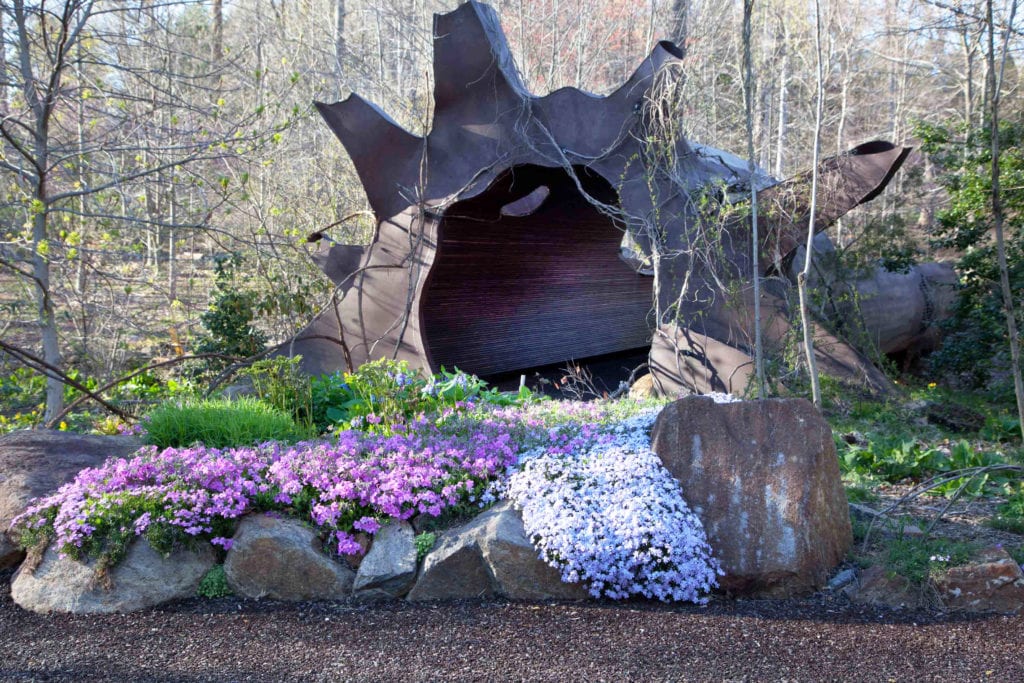
Visitors enter Bells Woodland through a bridge inspired by a fallen red oak tree and fabricated out of metal. Photo: Lisa Roper
Another large structure designed and partly manufactured by the garden staff is the old beech tree bridge that crosses Bell’s Run creek into Bell’s woodland, a metal bridge designed to look like a fallen tree, complete with adventitious growth springing from rich pockets in the old giant. Similarly, as you follow the trail into the woodland you may pass other down logs and mounds of soil with plants growing on them. All of these structures are by design, and what you see are decorative mushroom cultivation and hugelkultur mounds being used both to nurse young plants and to help control water runoff from an uphill roadway. In this way the garden creates art out of what is usually treated as waste material: old wood and dead tree limbs.
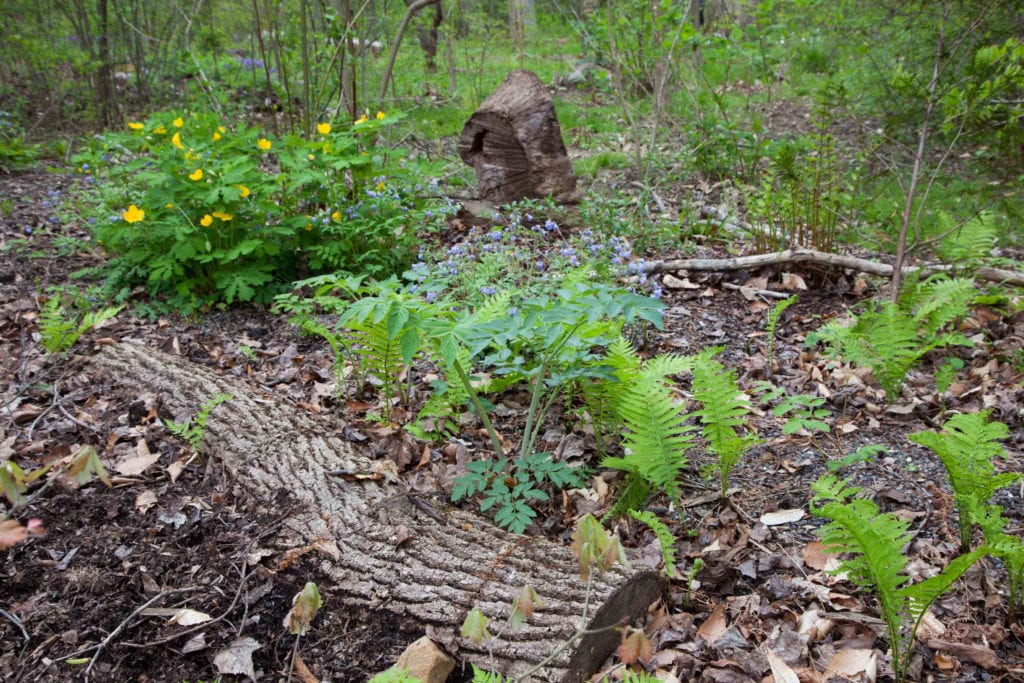
Hugelkultur beds utilize downed wood found on the property. This bed in Bell’s Woodland is planted with Ostrich fern and celandine poppy. Photo: Lisa Roper
In their treatment of waste materials, the staff takes it a step further in other parts of the garden – instead of cutting to the ground dead or damaged trees, these relics are left partly standing where it is safe to do so. What many gardens treat as a chore and an eyesore, Chanticleer uses to expand the garden aesthetic. They seem to be saying, flowers do not have to be, and really are not all the beauty a garden displays. If our eyes are opened to the beauty of a dead tree standing in a garden, both as an interesting form by itself as well as for its function as habitat for birds, bugs, and fungi, that is, for whatever other beautiful creatures it attracts to the garden, we may develop a new sense of what is beautiful in a garden. This is what makes the work being done at Chanticleer art as much as horticulture.
Creative Composting and Water Collection
Again after looking closely at parts of horticulture usually overlooked, the gardeners at Chanticleer have done interesting things with composting and water collection. Having found the compost of poor quality they revamped the facility. Now the compost is mixed more precisely and the bins where it ages have pipes in their floors that pump air from underneath. Now the piles consistently reach temperatures high enough to kill weed seeds and no longer even need to be turned.
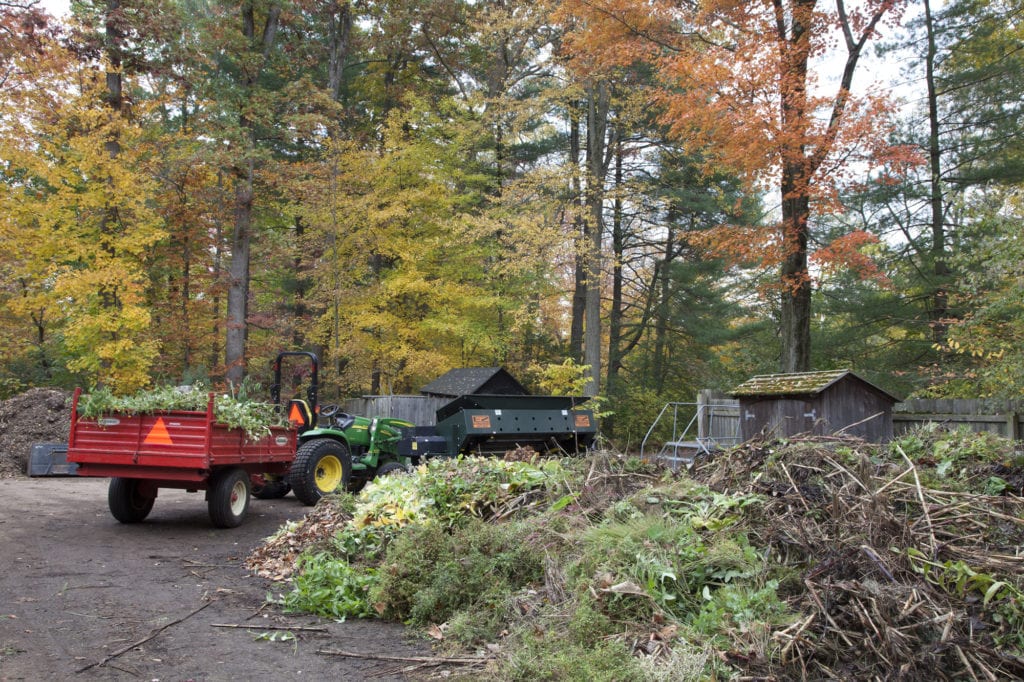
Compost is dumped in piles, mixed with a front-end loader, and put in aerated compost bins to heat up. Photo: Lisa Roper
Even more impressive are the various water collection strategies throughout the garden. In places where runoff is an issue, they have created rain gardens to slow down the flow, incorporating the movement of water through the landscape into the design. For water retention, four cisterns have been built inconspicuously throughout the garden, one even occupies space underneath the visitors’ information booth. These are filled with rainwater to later be used for regular watering.
Chanticleer is a garden unique in the scope of its imagination. Every piece of it is touched by creativity. How do they achieve this? By beginning new designs with the gardeners. There are five horticulturalists in charge of seven divisions of the garden. Given the tools and encouragement to manifest their ideas, problems become opportunities for creative exploration.
About the Author
David Falk is a professional horticulturalist and gardener. He splits his time between working on the horticulture staff at Garden in the Woods in Framingham, MA and running his ecological landscaping business Wild City Gardens in Somerville, MA, where he lives with his wife and two sons.
***
Each author appearing herein retains original copyright. Right to reproduce or disseminate all material herein, including to Columbia University Library’s CAUSEWAY Project, is otherwise reserved by ELA. Please contact ELA for permission to reprint.
Mention of products is not intended to constitute endorsement. Opinions expressed in this newsletter article do not necessarily represent those of ELA’s directors, staff, or members.

